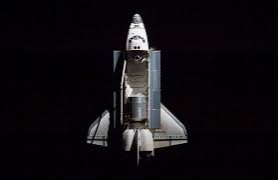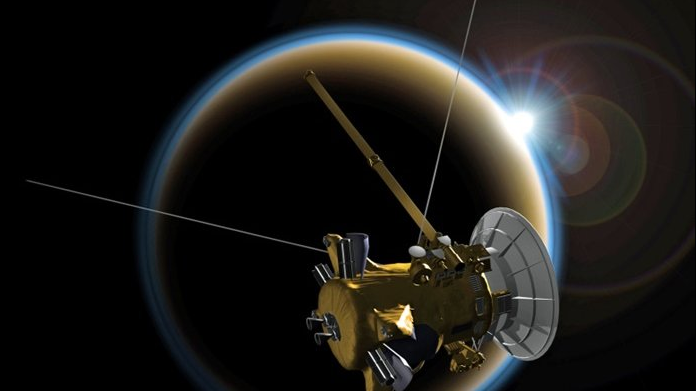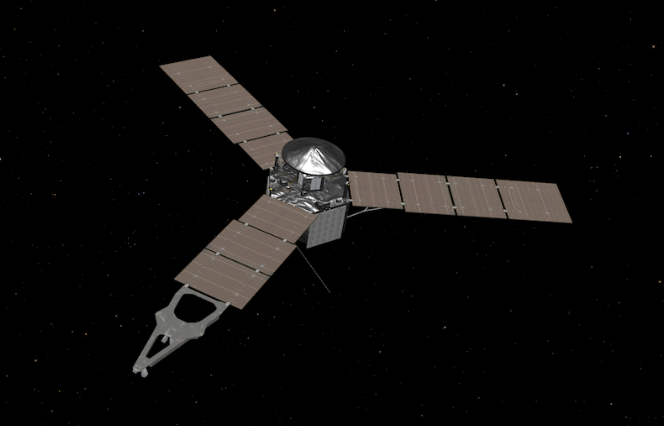
THE LEGEND HISTORY
OF SPACE ROBOTS
The 1980s: Space
Shuttle Robots

1981 marked the first flight of the space shuttle and the beginning of a new era in spaceflight. Along with the new space shuttle came new robots to help out in orbit. The most famous of these is the now-iconic Canadarm, the first robotic arm in space. Designed by the Canadian Space Agency, the Canadarm1 was first deployed in 1981 aboard the Columbia space shuttle by astronaut Richard Truly. Five of the revolutionary robotic arms were built, which were used in a total of 19 space shuttle missions throughout the 1980s, plus dozens more in the 1990s and 2000s. Today, the Canadarm2 is a crucial part of the International Space Station.

The 2000s: Robots
Visit Saturn
In 2004, the Cassini-Huygens probe finally reached Saturn and began its 13-year mission. Cassini was launched with Huygens, a special robotic lander contributed by the European Space Agency. The Huygens lander was released onto the surface of Titan, Saturn’s largest moon, where it captured full-color photos and sent them back to Earth before going offline. The Cassini-Huygens mission expanded our knowledge of Titan like never before. This moon is the only other celestial body in the solar system known to have liquid on its surface, although it isn’t water. Titan has liquid methane lakes, a rocky surface, and even a thick atmosphere. Robots were the key to learning all this. Meanwhile, a new generation of rovers landed on Mars in 2004, Spirit and Opportunity. These twin robots set records on Mars. They gave us hundreds of new color photos of the Martian surface and invaluable scientific insights about the red planet. Spirit lasted 20 times longer than its expected lifespan and went offline in 2010. Opportunity lasted even longer, staying online until 2018 when it was lost in a dust storm. Opportunity is the longest operating robot ever on Mars.

The 2010s: Juno
Spacecraft Mission
In 2011, NASA launched the first dedicated mission to Jupiter and its moons, the Juno probe. The robotic orbiter arrived at Jupiter in 2016. As of 2022, it has entered its extended mission phase, which NASA plans to carry out through at least 2025. Juno spent the first few years of its mission conducting research on Jupiter and learning about the planet’s structure and magnetic field. While orbiting Jupiter, Juno is also conducting flybys of Jupiter’s moons, including the four Galilean moons. Among these is Europa, which scientists believe has a giant liquid water ocean hidden beneath its icy shell.

The 2020s: Mars Perseverance
Rover Mission
2021 was a big year in the history of robotics in space. NASA landed two new robots on Mars in 2021, the robotic helicopter Ingenuity and the Perseverance rover. These two robots kicked off an exciting decade in space exploration. NASA and private spaceflight company SpaceX are both eyeing human missions to Mars in the 2030s, so the 2020s will be about expanding our knowledge of Mars like never before. Ingenuity is a unique robot because it is actually designed to fly around Mars rather than drive over the surface. It hitched a ride to Mars with the Perseverance rover. The helicopter’s main mission is to prove that drone flight technology works on Mars, despite Mars’s much thinner atmosphere. The Perseverance rover is an upgraded version of Curiosity. Its mission is to seek out signs of past or even present life on Mars, following up on Curiosity’s ongoing mission to search for the ingredients for life. So, what’s next in the 2020s and onward for robots in space? Perhaps the most exciting robotic mission on the horizon today is the Europa Clipper probe. Europa Clipper will be a dedicated mission to Europa, Jupiter’s ocean moon. It is not planned to launch until 2024, but when it does reach Europa, the orbiter will conduct up-close research on the moon to study its ice and search for signs of life.
2020s:SpaceX Dragon
Crew Mission

NASA astronauts Bob Behnken and Doug Hurley made history in May when they rode the SpaceX Falcon 9 into space and docked the Dragon capsule at the International Space Station (ISS). The pair have been on the station all summer, but their tour of duty is coming to an end soon. NASA administrator Jim Bridenstine announced the Dragon will leave the ISS on August 1st and will land the following day. The May SpaceX launch was the culmination of years of planning to bring crewed spaceflight back to US soil. Ever since the end of the Space Shuttle program, American astronauts have only been able to get to and from the station in Russian Soyuz capsules. That arrangement helped bridge the gap between the Shuttle and private vehicles, but the cost was extremely high. SpaceX is one of two companies that got approval from NASA to build human-rated spacecraft, the other being long-time government contractor Boeing. Despite an early lead and more funding, Boeing suffered several software issues with its capsule during a late 2019 test. Boeing’s CST-100 Starliner has yet to perform a make-up mission, leaving SpaceX to cross the finish line first with the DM-2 mission.





